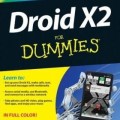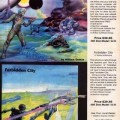An Interview with Paul Andreasen
Paul Andreasen was the primary designer of the Mikrokolor color graphics interface and his company, Andreasen’s Electronics Research & Development, sold versions for several TRS-80 models (including the Model 100). In this interview, which was conducted over January and February 2009, he talks about his varied and interesting experiences.
Q: How did you get started with electronics?
A: I joined the Air Force in 1963, first as a Fire Control Specialist on B-52’s, then went into Ground Radio Maintenance because there were so many needed in Vietnam. I then became a ROMAD (see www.romad.com for info) which then were all taken from the Ground Radio field. Went on to become a Combat Controller in ‘74, then got hurt badly enough (when the Turks invaded Cyprus) to be cross trained in the Safety Career Field, where I had the honor to start the first Space Shuttle Safety Office as NCOIC, on Vandenberg AFB, Kalifornia. It was to be the West Coast Shuttle Launch Pad, but got shelved when Challenger blew up. I retired here in 1983 on medical disability from the ROMAD and CCT days. (Though I did get 20 years in, they wouldn’t let me stay longer.) I always thought electrons were the sexiest things in existence outside of Sophia Loren! (In love with her since my pre-teens! Still am when she is in her 70’s, and my wife knows it!)
Q: How did you become involved with the TRS-80?
A: I realized early that computers had the power to impact our lives greatly, even when they were city block size, and were really just fast counting machines. I started teaching myself everything I could about them, eventually doing some minor design work and circuit board layout (while on active duty still) for Jade Microcomputer Products. The first one I ever put together was a Switch Systems prototype actually using two Intel 4004 chips, which was never produced, instead they went to the newly released 8008, then 8080 chips. I worked with several companies with the S100 bus, doing small design and occasionally programming jobs as a freelancer (still on active duty). Besides, I couldn’t STAND someone doing something I didn’t know anything about!! Still can’t!! (Called NOSY in others, curious when I do it!)
Q: Why did you create the Mikrokolor?
A: I had gotten one of the first TRS-80 Model I’s (still have it, serial number 700)! Didn’t like the Apple or the people involved, who I met several times (Jobs especially). I wound up getting together with a couple of other Air Force members at Vandenberg AFB who were into them also (2nd Lt James Cole and 2nd Lt Andrew Baird) and we just sort of formed a “network.” In fact they lived only a few houses from each other in officer housing (I was TSgt, enlisted puke) and had their Model I’s “networked” over a cable strung along their back fences! I don’t remember anyone actually networking, as we know it now, with any computers, other than that. They could share files and even run some remotely. Anyway, every time someone said something like “you can’t do that,” or “I wish you could…” we would all start breathing hard and our ears would start to point! (Spock wasn’t the first!)
Amongst dozens of Model I modifications and inventions, we started looking at the TI-99/4 computer that used a TI (Texas Instruments) TMS9918 color generation chip. We decided we wanted it for our sets, so we built it for the Model I first. James Cole created the memory interface and the circuitry for interfacing to an external computer (which required little difference for the Model I or Model 100), I did the RF interfacing to a modulator for output to a Television and the circuit board design, and Andrew Baird (“Drew” or more commonly “Droid”) created and wrote almost all of the software, including the interface drivers, the graphic editor, and a word processor! James Cole and I wrote an article for BYTE magazine that made the cover a couple of months in a row, but it was published as if he had done everything alone. His claim was that BYTE would only acknowledge a single author of an article, which I at least, still haven’t forgiven him for! (Drew has). There were even multiple author articles in the same magazine.
We got into doing it for the Model 100, also as a hobby only. A Major in my office talked us into forming a company and doing it commercially. That was a very mixed bag of results! James went on to big things, and Droid has worked on and off for Microsoft for years! He is a consultant now, but worked (I think) directly for Bill Gates at one time. Sucker THINKS in code!!
Q: How did you first release it?
A: We released it in the article referenced above by James Cole, then later in advertisements in BYTE and Portable 100 magazines. I think I did one for Wayne Green of 73 magazine, but don’t remember if it was published. We were also mentioned several times in “new products” in pubs like Popular Electronics, and others. Just about everyone at least mentioned us after the BYTE article.
Q: What other types of products did you create?
A: We had done several other projects like increased capability power supplies for the Model I (which would have cost Radio Shack about ten cents!), and several others. My Model I is still in storage (caps are undoubtedly dead by now!), but runs a 12MHz Z80 from Zilog’s research department, addresses 16MB (yes, MEGABYTES) through a TI memory expansion chip never marketed, and runs drives from 8" to 5" in all densities from Single Sided Single Density to Double Sided Quad Density. We also created an interface for the Model I,III and 4 for a Panasonic 256MB Bubble Memory unit, which was paid for by NEC for their 8201 unit. (Not sure of numbers, getting old!) It too, never sold. I found one of the modules the other day, but cannot remember anything about the interface. Data is long gone! I am going to search my garage upstairs now that I have time! Just have to work up the courage first! (I KNOW there are “things” living up there!)
We also created an interface that allowed a then newly invented non-radiographic mammography machine (it used high intensity burst light) to superimpose data on exposed films, but the doctor who had us do that said it didn’t work, refused to pay us, and took the machine overseas, and never even credited us with it. Last I heard of it was on an interview in the 90’s on a TV medical show where he told of it selling HUNDREDS for $2 million each in Europe! The machine even had our original interface and a Model 100 attached to it!
We did license the Mikrokolor to Tandy, but they wound up producing their black and white version that cost twice as much and never did work well. We never understood that, but theirs was the biggest check we received ($50k) so we didn’t argue! Olivetti from Italy sent over some engineers to see the set, and negotiate a license for Europe, but they wound up just taking the design back and producing it without paying us. Not much we could do outside the US then. Laws were very different concerning copyrights, etc., so they and the doctor got away with it. The funny thing is we sold the most for the Tandy Model 100, and Tandy made us pay full boat for every set! NEC AND Kyocera sent us half dozen FREE sets with all their factory data, asking us to make it for theirs! We did, but they never stayed around long enough to use them.
We probably never went a week without another project on the workbench. I still have tens of thousands of parts around! Know anyone that needs a few thousand 4116 memory chips? I think we paid about $25 EACH when they were new!! Last time I sold any, I gave a strip of fifty to someone at a yard sale for $1. I LOVED to invent stuff, especially after someone says it can’t be done! What that means is: THEY can’t do it! Maybe…. Oh, yeah. I haven’t quit yet!!!!! Just wait, now that I have time!! One of my kids bought me a T-Shirt that says it best, “RETIRED know-it-all, and now has the time to explain it to you!”
Q: Was “Andreasen’s Electronics Research & Development” your company?
A: Yes, it was. We sold the Mikrokolor under that name until the Major I referred to had us form a corporation, called “Debutech,” and then proceeded to steal us blind, along with several financial institutions’ officers. (He went broke and they went to jail later, so I figure we are even!)
Q: How popular was the Mikrokolor?
A: At the start, very! We were the first company given permission to have our own Special Interest Group AND sell on the then new “CompuServe” BBS. We sold around 400 of them before our disaster with our crooked associates. For the early eighties, that was a LOT of money, not to mention the commercial licenses and applications (which actually made more!).
I remember one couple in Texas (Bless, them, at the age they were then, they must have passed on! I hope so, because they know my address!) They bought it from a magazine advertisement, and THEN went out and bought a Model 100! After a few months, they called and asked for a refund. I was handling the service calls, of which there were fortunately few (answering CompuServe questions at 300 baud took all day and night!) and they said it wouldn’t do anything. Well, I personally tested every unit shipped, so I knew it had to be a procedural thing. I asked all the usual questions, such as, “Is it plugged into the computer interface connector properly?” Yes it was. Then “Was it properly powered up so the screen showed the startup data, and did they them load the driver program?” Well, they said that had taken a couple weeks to figure out, but they did all that, and hooked it to the modulator, but nothing ever happened.
I asked bunches of questions, and tried to find out if it was a hardware problem or loading the software (the tape loading was horrible, even though I included the mod to the tape recorder article that I had written for Portable 100). They said they had a radio repairman in the area help them with all that, but still wanted their money back because it still “wouldn’t DO anything!” I finally asked them if they had any other problems with the television, as some would not respond well to our channel 10 modulator. The answer, just before I gave them an RMA number, was, “What TV? We ain’t got one! TV don’t come in here in the Texas Panhandle!” They got their money back. (We never DID think to include how to hook the modulator to the TV inputs, OR state that a TV was required! Duh! Who that didn’t understand those things would buy one? Well, we got THAT answer!)
Q: What was your connection to the Micromint E-Z Color?
A: That’s a little complicated. Steve Ciarcia advertised the E-Z Color LONG before it was built. He wound up taking our schematic, changing one small resistor value in the interface, and using it as we designed it, for the Apple II (I think) Well, we had his ad pointed out to us, and after MUCH wrangling with his publisher (and after mention of “lawsuits”) we got Steve talking to us. It turns out that we had talked quite a few times before at different electronic shows and such, so he knew at least who I was. It turns out that his “Circuit Cellar” column was so popular (I loved it too!) that he didn’t have time to personally design, or even overlook each circuit! They were submitted by associates and freelancers. Well, one submitted ours, probably from the Byte article, (hopefully) not realizing we had copyrighted it (it was almost impossible in those days to patent something like that) and were selling it commercially. Steve and I talked about it, and he said he had tied up so much money getting it ready for market, that he would rather fight the lawsuit than quit. We finally agreed for him to print a retraction in his column, giving us credit for the circuit, and agreeing to only market it for non-Tandy products. We had no desire to go the Apple route so we were happy with that. I don’t know if it ever really got off the ground for him or not. We kind of lost touch after that.
Q: How did you get involved with Montezuma Micro? Do you have any stories about them?
A: I started using their program on the Model I. Almost ANYTHING would have been an improvement on TRSDOS, especially the first version. Eventually I think “NewDos” came out the most popular, but CP/M had so much already written for it that was platform transportable that I loved it. (The Safety Office on Vandenberg AFB was run on a Model I, with CP/M 2.2 from Montezuma LONG before the base had ANY computers outside the big mainframe that did base functions and rocket profiles, even if they didn’t know it! And other than my boss, I guarantee they didn’t!) The problem was that there were SO many different systems out by then (I think the PDP-11 was one, as was the Rainbow) that had zero compatibility with other systems. Remember there was only ONE standard for floppies (which had immediately replaced tape drives), and that was the 8" Single Sided Single Density! Now we had the 5" floppies out, but everyone from Atari to Compaq, and others all had their own proprietary format!
So, Montezuma had written several “translation” programs that would allow you to pick which kind of floppy to “read” and then what format to “write” it to. They used a controller chip in most sets that the operating system set all the parameters to, so CP/M just changed them on the fly if told to. Later a big secret of coping IBM’s “protected” programs was to use CP/M to do this, as the system would simply copy bit for bit, rather than use a “set” pattern for writing. A popular protection scheme was to write a different density in a part of the disk. This might or might not be used, as most chips could “read” different densities, but would only “write” those the OS told them to. So if you copied a disk with differing densities on the IBM (I don’t think they could conceive of someone using another brand!), their controller would write that different density the same density as the rest of the disk. You go to run it, and the system does not find the “different” density section, it must be a copy and wouldn’t run! Using CP/M, it would be the same, and work fine! The Osborne was one of the best for this after the TRS-80, because of the portability.
Sorry, got side tracked there by old memories! I started sending them different formats, as I somehow got known on the BBS’s of the time as an expert on that. (An expert is really just an old drip under pressure! I now resemble the remark at 63!) They started giving me the software tools to decode and rewrite the format changes, so I wound up getting paid for each one we did for everything from the sizes, to densities, to the manufacturers. It was fun. No stories I remember, except they were all great people and FUN to work with! AND I still have my copy of 2.2!! All transferred to 3" floppies! I found it when I cleaned out the store we just closed (along with my boxed copies of DOS 1.1, and BASIC 1.0 from IBM).
Q: What have you been doing since then?
A: I opened an electronic repair shop in Lompoc, Kalifornia, right outside Vandenberg AFB, while I was on active duty in 1980. (I was and am a Ham Operator too, K1JAN.) We realized that computers would be a big repair item, so we started putting my hobby info to work. There were a LOT of computer folks out here then (including the owners of the infamous Power Computing), and we were repairing home made, kit made, and then the TRS-80 and others. In fact, I am pretty sure that between Vandenberg AFB and Point Magu Navy Base, there was more computer “savvy” people than were anywhere near Silicon Valley at that time! (The Government was THE driving force behind the growth of computer knowledge, the public just didn’t know it! )
Soon IBM jumped in with the PC, and we kept it up until I retired and took over the shop (had a manager before I retired) and just quit last month! Have been inventing stuff and having a ball ever since. I did take off and work for three years for Hendry Telephone Products in Santa Barbara (Santa Boo-Boo to us in Lompoc) and did a lot of innovation and a few inventions and patents in their Electronics R&D department. I was working for an ex- AF Major who is one of my dearest friends, so my job description was “working at my hobby [inventing stuff], for my best friend, at an obscene salary.” It really doesn’t get much better than that!
THIS in fact, is my first “official” day of retirement! I closed Mount Desert West Computers & Electronics 28 years after its inception, on Dec 31st, but it took until yesterday to store everything away to play with later (inventions are still fun!) and turn in the keys to the building! Today was the first time I didn’t HAVE to go somewhere, do something, or be someone, in 51 years!! Dug out my motorcycle (Kawasaki Vulcan) for the first time in months, and got some wind in the face. Nice! Should have done it years ago!
Q: Are there any aspects of the TRS-80 that you think could be applied to computers today?
A: We need to quit being so “more, more!, I need more!” in attitude. In the early 80’s I wrote a program (for that same friend, who then had a trophy business) that provided an inventory of 100k items, had a complete Point of Sale system, and tracked used parts, pricing, parts usage, reorder lists, invoicing, and only took 8k of memory to run in a Model I! I just got rid of a Point of Sale system for the IBM that did even less, and cost $33,000, and took XP Pro, 2 GB of ram, and at LEAST a 3 GHz processor to even run! AND had an 11 INCH tall a stack of instruction manuals!! More is NOT less! LESS is less!
Why does an OS have to have an abomination of a system just to run, and that poorly, and yet people still like to use things like the Model 100 because it is so simple! I use WordPad for everything from writing code to letters. It takes more processor and ram than were in this COUNTRY in the entire 80’s just to run, and it is a simple program! The Model 100 doesn’t have the great screen and so many lines, but does every bit as good! Maybe better because you had to pay attention. Pell Speckers will be the doom of the language yet!
Q: Ham radio used to be closely tied to early microcomputers. Do you think there is still a connection?
A: Yes! I can talk on a local VHF repeater, to an Internet based system that carries the signal (1 whole watt!) to South Africa, where it will come out on another system tied to a local repeater, and I can converse with missionaries that couldn’t possibly afford the HF equipment to do the same thing. We here have a club (Satellite Amateur Radio Club [www.satellitearc.com] that has just hooked up an Echo link system that allows even our handicapped or senior members to remotely control and use our mountain top based HF gear. There is not only a marriage between the two, it really may have been made in Heaven!
I heard someone recently say that Ham Radio was dead. That there were so few hams, even now the code requirement is gone, that manufacturers are not interested in the market any more! THERE ARE MORE LICENSED HAMS (according to the FCC, not some pundit) TODAY, THAN EVER BEFORE IN HISTORY!! One of the problems in Ham Radio is we are all “experts,” and you might remember my explanation of what that really means! We all have our opinion, and you BETTER SHARE IT! There are still WAY too many of THAT type of Ham left. The newer, smarter, more open ones admit they don’t know everything, so they tend to invent new stuff! (Not all by newbies! Some “old Guys” are still tops!) Me, I will be one the air LONG after I quit pecking at a keyboard! (Soon now, if I had a choice!) After OVER 28 years I have been there, keyed that, and deleted most of it!
My thanks to Paul Andreasen for his participation in this interview.














Larry Holmes says:
I enjoyed this article; I don’t know how old it is but I imagine Paul and I were active in the business at about the same times. Too bad I didn’t meet him then. We could have worked together, since I also did not wish to get involved with Apple so stayed with Tandy, etc. I also would have done justice to his inventions and would not have stolen from him, as others seem to have done. I had similar experiences only my entire company was stolen, not just a design! I went on a business trip and while I was gone, some people I was negotiating with, who had participated in some of the business for a while, backed some trucks up to the office, loaded up everything, and moved it to their building. When I got back, I found I would have to sue them rather than have the DA file criminal charges, because I had worked with them a bit to have them involved with the company, so it was called a civil dispute rather than a crime! Since they had my entire company (which had “downsized”, or shrunk, due to the state of the markets in the late 80’s), even my desk and my personal things, including a notebook they read and used against me later on, so, what did I have to sue them with? Anyway, like Paul, I had my hard luck with “partners” or associates or whatever crooks are called now…
Thanks for putting this article here. I am enjoying reading these “historic” stories from the beginnings of the personal computer industry.